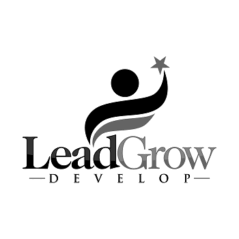Water Damage Carpet issues may begin in minutes when a room is flooded. Water seeps quite deep into the subflooring, cushioning, and carpet fibres. If you don’t move quickly, the damage will escalate. The following checklist will guide you in taking the correct actions from the start.
Step 1: Stop the Water Source
Before drying the carpet, stop the leak. Turn off the main water supply if a pipe bursts. If the flood comes from rain, check for roof leaks or blocked drains. Do not let more water enter the room.
Clear standing water using a wet vacuum or mop. Remove as much water as possible from the surface.
Step 2: Remove Furniture and Items
Shift furniture away from the wet carpet. Put wooden legs on foil or blocks to prevent staining. Lift rugs, boxes, or clothes. Wet items may ruin carpet fibers. They can also develop mould if not removed from the wet surface.
Dry items separately in good air circulation. Dispose of wet paper or cloth if mould has begun.
Step 3: Thoroughly Extract Water
Use a wet-dry vacuum to suck water from the carpet. Repeat passes in each area. You can rent these units if you don’t have one. Never use a regular vacuum on a wet carpet—it may shatter and present electrical hazards.
If you see standing water or pungent odours, call experts immediately.
Step 4: Lift the Carpet for Underlay Drying
Water Damage Carpet tends to damage the padding below. The underlay retains moisture longer than the surface. You will need to roll up the carpet edges to inspect it.
If the underlay is wet, take it out. The padding will not dry correctly while still installed. Install new padding once all is completely dry.
Step 5: Improve Airflow and Ventilation
Good airflow accelerates Carpet Drying. Open doors and windows. Circulate air using high-speed fans. Direct fans towards the wet carpet and the underfloor.
Employ a dehumidifier to lower indoor moisture levels. Humidity retards drying and encourages mould. This is crucial for Water Damage Melbourne houses where humidity levels remain high.
Step 6: Apply Antimicrobial Treatment
Floodwater contains bacteria, particularly if it is from outside. Even clean tap water will promote microbial growth after 24 hours. Spray antimicrobial cleaners to destroy bacteria in the carpet fibres.
Treat both the carpet and subfloor. This removes musty odours and prevents future mould growth.
Step 7: Check for Mould Signs
Mould usually develops after 48 hours of water. Look for black, green, or white marks. Smell for a musty scent. If you notice or detect mould, move with speed.
Don’t take these signs lightly. Mould acts fast and can harm your health. In such instances, you might need to seek the services of a professional to eliminate it thoroughly.
Step 8: Test Moisture Before Reinstalling
Before reinstalling the carpet, ensure that all the items are completely dry. Use a moisture meter to check the subfloor and carpet. Never reinstall wet carpets or padding. Even slight dampness can result in Water Damage and Carpet issues again.
Step 9: Clean and Sanitize the Room
After it dries, shampoo the carpet with a steam cleaner. It eradicates dirt, bacteria, and odour. Clean walls, baseboards, and floors as well. Apply disinfectants on all surfaces exposed to floodwater.
In case the smell lingers, there may still be concealed moisture. Check again the underlay and subfloor prior to closing the area.
Water Damage Carpet restoration takes a complete checklist such as this. Always respond quickly and apply the proper techniques. Residences in Water Damage Melbourne areas are exposed to additional risks owing to local conditions, so an immediate response is necessary.
Author Bio
Capital Facility Services is Melbourne’s leading commercial cleaning and facilities management company providing flood, water, and fire damage cleanups, mould treatment, and building maintenance.
